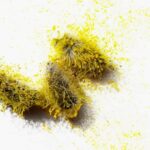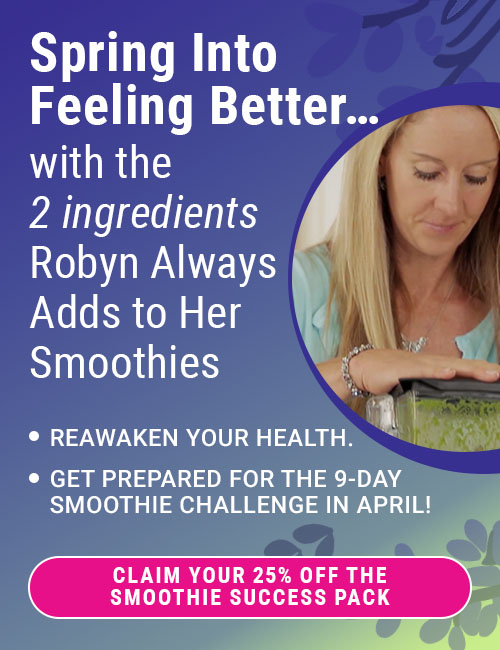Are you scared of “fermented” foods?
Twenty years ago, I learned about cultured, or fermented, probiotic-rich living foods. I was a total freak at the time. I was very alone. I knew a few older ladies who were “into” it, but I didn’t dare tell my peers what I was doing. Or my in-laws.
I was slowly becoming an alien life form—not immunizing my kids, making “rotten food” (not really, but that’s what they would have thought), blending up arugula in the blender…..so many habits foreign to a Cheetos-and-Diet-Pepsi-Processed-Food World.
Fortunately, some of these “advanced” concepts in nutrition, while most dietitians and nutritionists still aren’t embracing them, are becoming “mainstream” enough that health food stores are now selling raw, fermented food products. They’re outrageously expensive, though. I hope you make your own because doing so involves a small learning curve but the habits themselves are SO inexpensive.
Five years ago, I addressed this subject on my blog and posted an expanded version of the following content and YouTube video. I teach all about many cultured foods habits in living color in Step 8 of 12 Steps to Whole Foods.
Dear GreenSmoothieGirl: I really like the idea of adding the Rejuvelac as my green smoothie base, but I’m honestly totally freaked out to leave something perishable on my counter top in an unsealed container for several days. What are the chances that “bad bacteria” get in there and make me sick? I really appreciate any feedback you have. It sounds like a great opportunity to make green smoothies do even more for me, but I can’t get over the initial concept. –Grace
Answer: Grace, I think it might help if I explain the concept a bit more. Fermented foods are part of your diet already if you eat yogurt or sauerkraut or even beer. The manufacturer had to let it sit at room temperature for a time to grow the cultures.
Also, before refrigeration, human beings had a stronger inner terrain and microbes rarely harmed them. Of course, now we have antibiotics that have seriously damaged most people’s balance of beneficial microorganisms colonizing the digestive tract. We also have refined foods weakening us, and few, if any, cultured foods strengthening us. We now seem to believe that killing a couple million of the billions of microscopic critters around us will somehow do the trick.
It’s a weird modern concept that everything we eat has to be sterilized—ancient peoples lived among billions of organisms very peacefully for thousands of years. So maybe our food is sterilized, fumigated, pasteurized, irradiated…..but there are billions of organisms everywhere ELSE (which makes the antibiotic wipes a pointless waste of money).
So, it feels unnatural to you but only because of our strange modern traditions, and the fact that we’ve gotten away from eating foods that nurture our gut’s need for healthy colonization. Just ONE course of antibiotics can change the gut’s internal terrain forever.
Every culture of the world eats cultured foods. Some chew up a food with their saliva, spit it into an earthen pot, and drink it a week later. (I won’t be teaching you those methods, don’t worry.) There are literally hundreds of types of cultured foods in the traditions of indigenous peoples and those who have not completely adopted processed diets.
My 12 Steps to Whole Foods program deals with this subject in an easily understood, condensed way in Ch. 8 and uses what I feel is a do-able, moderate amount of probiotic foods. My work focuses on culturing vegetables, optionally some raw, antibiotic- and hormone-free milk, or coconut liquid. In fact, I now culture my coconut liquid before using it in Hot Pink Breakfast Smoothie, which is one of my most-loved recipes in the 12 Steps course where we shift to whole-foods breakfasts. Just put kefir grains (obtained online) in your coconut liquid topped with a vented lid on the counter. Each day, pour the fermented coconut liquid into your blender to make your breakfast, then put fresh coconut liquid into the jar with the same kefir grains. Every day, do the same and you will have a freshly cultured breakfast every morning for excellent digestive health.
Does it help you to know that I have had from a quart to a half-gallon of raw kefir, yogurt, coconut kefir, sprouts, Rejuvelac, or sauerkraut on my counter pretty much every day of my life for the past 17 years? We have had zero instances of infection and zero food poisoning, which people seem to fear is related to cultured foods.
It also helps if you understand the process of how food has historically been preserved. You can preserve foods a few ways. One, drying it to dramatically slow oxidation, which often involves lots of salt. Two, can it by killing all its life force (enzymes and vitamins) so that there’s very little to oxidize, and then sealing it against air and bacteria. Third, utilizing lactobacillus and other beneficial organisms and lactic acid to break down the proteins and preserve the food (fermenting).
The way I make sauerkraut (see Ch. 8 of 12 Steps) is that the unrefined salt preserves it for a few days while the (slower) lactic acid begins to take over. I have two-year old raw sauerkraut (that I preserved with whey from my yogurt/kefir) that has been unsealed (but covered tightly with a lid) that we are still eating. At this point, it’s too soft for my liking—it’s better, texture-wise, at six months old—but nevertheless it’s preserved and the healthy bacteria help my family stay healthy.
It might help to address the semantics. The word “fermented” has a negative connotation. (Although, beer drinkers who wouldn’t be caught dead eating fermented vegetables drink PLENTY of fermentation.) When you think of fermented, do you think of ROTTEN? We aren’t eating any rotten foods at my house. We could mentally replace that word with a much nicer one: cultured!
So, don’t eat fermented foods. Eat cultured ones!
If “bad” bacteria gets into your cultured foods and makes them “go bad,” you will know. They will taste bad and/or mold. I have almost never had this happen. Once it happened with a bottle of sauerkraut. Never with kefir or Rejuvelac.
My Rejuvelac ferments in a day in the summer. In the colder months, I let it culture for 2 days.
Here’s my video showing this easy, inexpensive habit that could help you get through the winter without viruses or infections!
Posted in: 12 Steps To Whole Food













